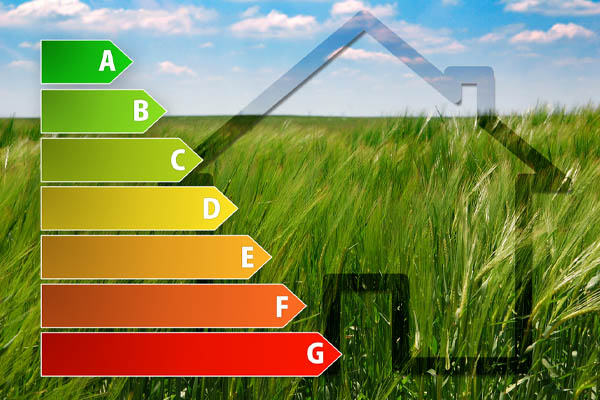What Does An Air Conditioner’s SEER Rating Actually Mean?

The SEER rating is always one of the most important factors to consider when you’re buying an air conditioner. Why? Well, this is because it is what determines the efficiency of your HVAC system in terms of energy consumption and indoor comfort.
According to the U.S. Energy Information Administration or the EIA, an HVAC system in your home should have a SEER rating of 14 or higher. However, SEER rating requirements can also differ depending on the state you’re from.
For more information about this topic, read on…
What Does An Air Conditioner’s SEER Rating Actually Mean?
Contents
The SEER rating is an acronym that is short for Seasonal Energy Efficiency Ratio. It refers to the measure of the cooling output of an air conditioning system compared to the total energy it consumes in a year.
The SEER rating usually ranges from 13 to 21, and naturally, the higher the efficiency of your system, the higher the SEER rating is, too.
Importance Of SEER

Now, why is SEER rating important?
Well, this is because a cooling system with a good SEER rating can offer you great benefits. Some of these advantages include:
- Lower cooling costs: When an air conditioner is highly efficient, it can cool your home to your desired temperature while consuming less energy. In other words, the higher the SEER rating of your air conditioner, the better it can lower your energy costs.
- Better comfort: According to professional HVAC contractors, when your air conditioner performs well, it can cool even a 4-bedroom house by 10 degrees Fahrenheit in just 3 hours. Of course, this would also depend on other factors, e.g., your air conditioner’s size and age, but the SEER rating is a pretty significant factor as well.
- More eco-friendly cooling: When your air conditioner consumes less energy, that also means that it emits fewer greenhouse gases. So, if you have an efficient air conditioning system (with a high SEER rating), it’s a lot more eco-friendly than inefficient air conditioners.
What Is A Good SEER Rating?
But, what can we refer to as a good SEER rating?
Generally, if your air conditioner has a rating of 14 or above, that’s pretty good. However, to determine what rating is suited for your needs, other factors should be considered, such as:
- The size of your home
- Your cooling needs
- Your preferred energy consumption rate
Out of these three, the one that significantly affects your system’s efficiency is the size of your home. So for this, it’s best to consult a professional HVAC contractor to determine the SEER rating appropriate for your needs.
For example, even if an air conditioner has a SEER rating of 14, this may only be efficient for cooling a 2-bedroom home. But if you have a 5-bedroom home, you might need to look for a unit with a higher SEER rating and a higher capacity.
How SEER Rating Is Calculated

We’ve been talking a lot of SEER rating numbers, but how is this even calculated?
Well, if you want to calculate the SEER rating of your cooling system right now, you need to follow this equation:
System’s total cooling output for the year divided by your total electric consumption for the same year.
Your total electric consumption for the year can refer to the total bill you have. But for the system’s total cooling output, you’d need to calculate it by using the equation below:
Multiply the British Thermal Unit per hour (BTU/h) of the system (usually indicated) by the number of hours you’re using the system in a day. Once you get the answer to that, multiply it again by the number of days you use the system in a year.
To give you a better picture of how this is done, here’s a sample calculation:
BTU/h = 50,000 BTUs
Number of hours you’re using the system in a day = 12 hours
Number of days you’re using the system in a year = 180 days
Following the equation to get the system’s cooling output you get:
(50,000 BTUs x 12) x 180 = 10,800,000 BTUs per year (system’s total cooling output for the year)
Now, let’s say that your total energy consumption for the year is 700,000 Wh. Here’s how you solve your SEER rating:
10,800,000 / 700,000 = 15.4 SEER
Your SEER rating is at 15.4, which means you have a highly efficient unit.
How To Find A SEER Rating On An Air Conditioner
Fortunately, if you want to find the SEER rating on an air conditioner, you don’t need to do all these calculations.
The US Department of Energy requires HVAC manufacturers to indicate the SEER rating on their cooling systems. On top of this, manufacturers should also put the Energy Star label for models that qualify.
So, if you want to find the SEER rating on your air conditioner, all you need is to look for a yellow and black sticker with a clear SEER rating indicated on it. This is usually placed on the side of the condenser unit or your air handler.
If you can’t find the sticker on those two areas, then the next thing you can do is find the name of the manufacturer, the model number, and the serial number. Write that down and search for the system online or simply call the manufacturer.
We know that this sounds like a lot of work, so if you don’t want to undergo all the hassle, don’t hesitate to call an expert HVAC contractor to help you.
However, in most cases, finding the SEER rating shouldn’t be very hard unless the manufacturer wasn’t able to label it clearly.
What Are Mismatched Cooling Systems?

Other than the SEER rating, it’s also important that your condenser unit and air handler matches so that your air conditioning system performs at best.
To ensure that this is achieved, manufacturers make air handlers that are compatible with specific condensers. This makes it easier for HVAC contractors to match the air handler to its designated condenser.
However, even if this is the case, mismatching still happens, especially if you hire an inexperienced HVAC contractor.
Another kind of mismatched system that happens is when the size of your air conditioner doesn’t match your home. This means that the unit you purchased is either too large or too small for your home. But why is this a problem?
When your air conditioner is too large, it will short cycle. A short cycling air conditioner, although it may cool your home, does not run long enough for the air conditioner to remove any humidity or properly filter your air.
This leads to poor indoor air quality and discomfort. However, on top of that, these short cycles also lead to more energy consumption because your system keeps going on and off.
On the other hand, if your air conditioner is undersized, you will notice very long cycles. However, because it’s too small, the system will overwork, leading to wear and tear, frequent HVAC repairs, and premature replacements. In the meantime, because it works harder, you have to pay astronomical energy costs.
In other words, a mismatched system will greatly reduce your unit’s efficiency regardless of how high the SEER rating is. That’s why you must work with an HVAC company that understands the importance of this.
It’s highly recommended to talk to a qualified HVAC contractor to avoid dealing with a mismatched cooling system.
Other Factors To Consider When Choosing A Cooling System
Apart from the SEER rating, you should also consider the following factors when choosing the right air conditioning system for you:
- Air Conditioner Size: As mentioned above, oversized and undersized cooling systems generally consume more energy, increasing your energy costs.
- AC Unit Price: Make sure that you stick to your budget.
- Noise: When an air conditioning system is less efficient, it produces more noise because it’s working harder.
- HVAC Warranty: It’s important to always check for this as it guarantees you a replacement and repair if your system encounters problems.
Conclusion
A good SEER rating generally means that your air conditioner is highly efficient. Therefore, it can lower your energy cost. However, other than having a good SEER rating, an ENERGY STAR certified air conditioner helps cut your energy costs even further while protecting the environment.
Always remember, for all your heating and cooling needs, it’s always best to contact a professional HVAC contractor. They can help you select the best HVAC system suitable for your needs and, of course, install and maintain it.
Call R.F. Ohl For All Of Your HVAC Requirements

R.F. Ohl offers superior heating and cooling services in the Poconos and the Lehigh Valley, Pennsylvania.
Our certified HVAC technicians can provide you with excellent heating and cooling services, including tune-ups, repairs, installations, replacements, and more. Each technician has outstanding knowledge and experience to serve your HVAC system needs correctly.
R.F. Ohl guarantees to provide the most competitive heating and cooling service costs in the area. Our maintenance services ensure to improve your comfort, increase your system’s energy efficiency, and reduce your home’s heating and cooling costs.
Need your system repaired or replaced? We’ll recommend the best one for your home that fits within your budget. The best part is, all our work is backed with a guarantee to ensure your satisfaction.
If you wish to schedule a service appointment, give us a call today! We also offer in-home estimates at no cost at all.
Click here to contact us today or give us a call at (610) 377-1098 if you have any questions.